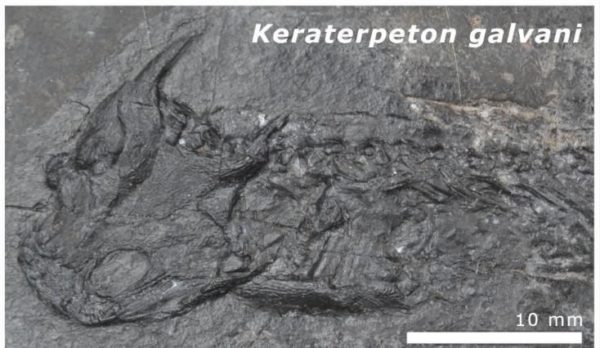Bizarre, mangled fossils in Ireland were likely deformed by superheated fluids that burst out from below Earth’s crust around 300 million years ago. The superhot fluids were released when the planet’s ancient continents collided together to form the supercontinent Pangaea, a new study shows.
The fossils, which mainly consist of a group of amphibian-like tetrapods in the genus Keraterpeton, were discovered in 1866 trapped within a layer of coal at the Jarrow Assemblage, a fossil site in County Kilkenny, southern Ireland. Keraterpeton were palm-size, salamander-shaped creatures with pointed, dragon-like horns, according to University College Cork (opens in new tab) in Ireland. The fossils date back to around 320 million years ago during the Carboniferous period (359 to 299 million years ago).
The Jarrow Assemblage fossils all share a unique trait: They’ve been warped, and large sections of them have been replaced by the surrounding coal. This makes it very hard to distinguish the fossils from their surroundings and tell what the fossils originally looked like. The fossils also contain an unusually high amount of apatite crystals, or phosphate minerals that are found in the bones of most animals, as well as lots of volcanic rocks.
“Writer Fuel” is a series of cool real-world stories that might inspire your little writer heart. Check out our Writer Fuel page on the LimFic blog for more inspiration.


